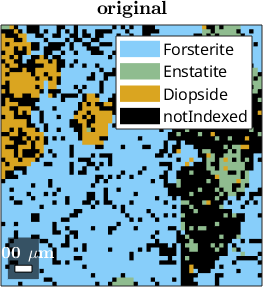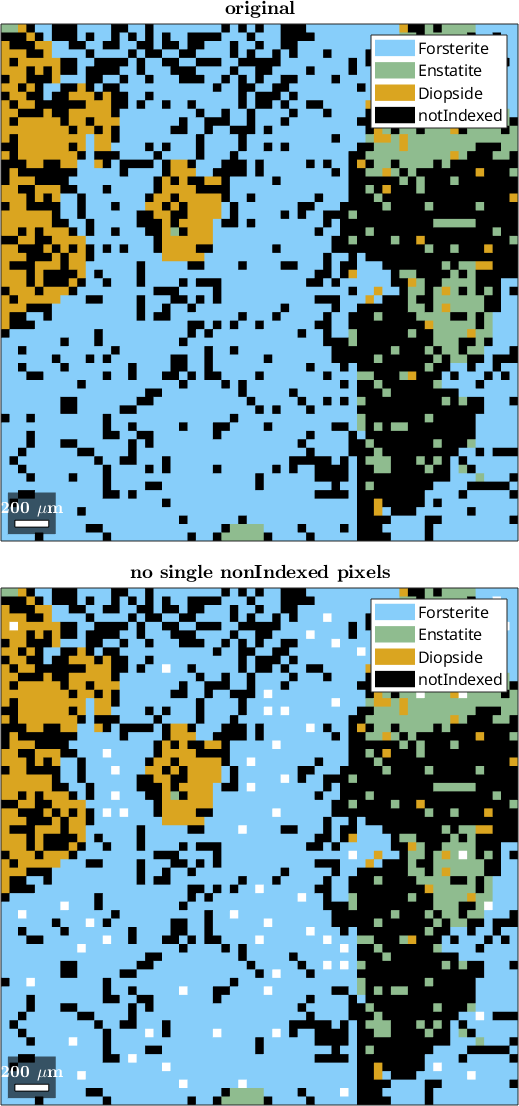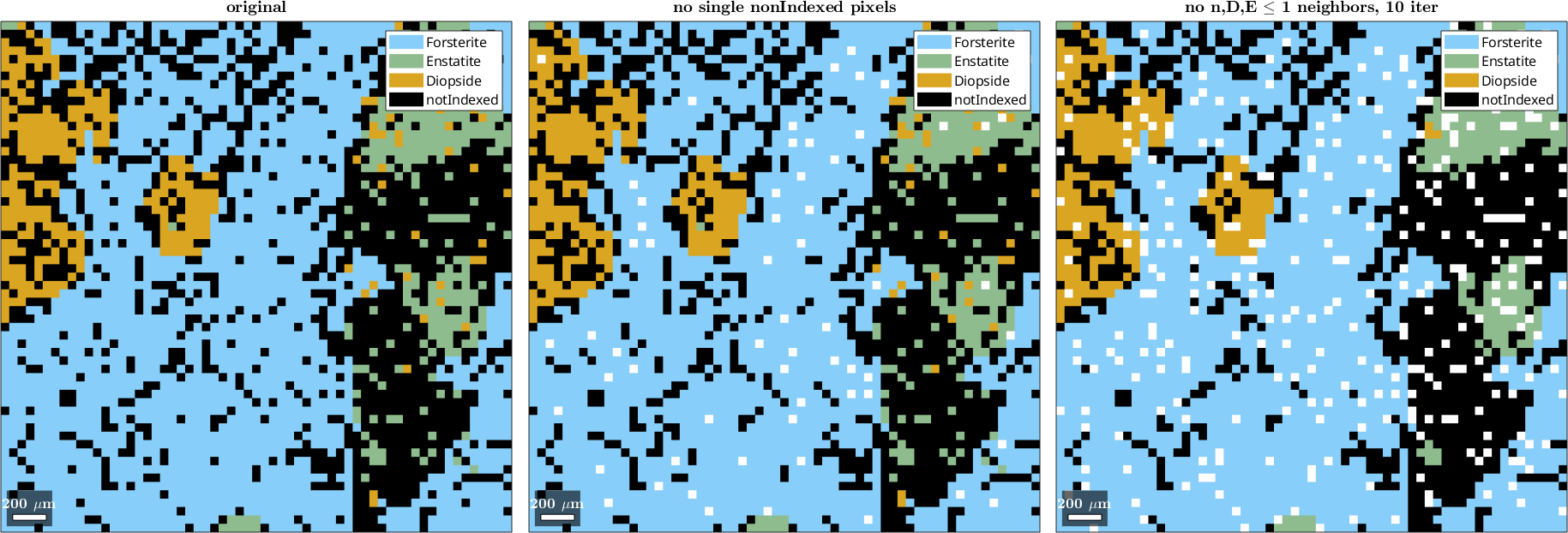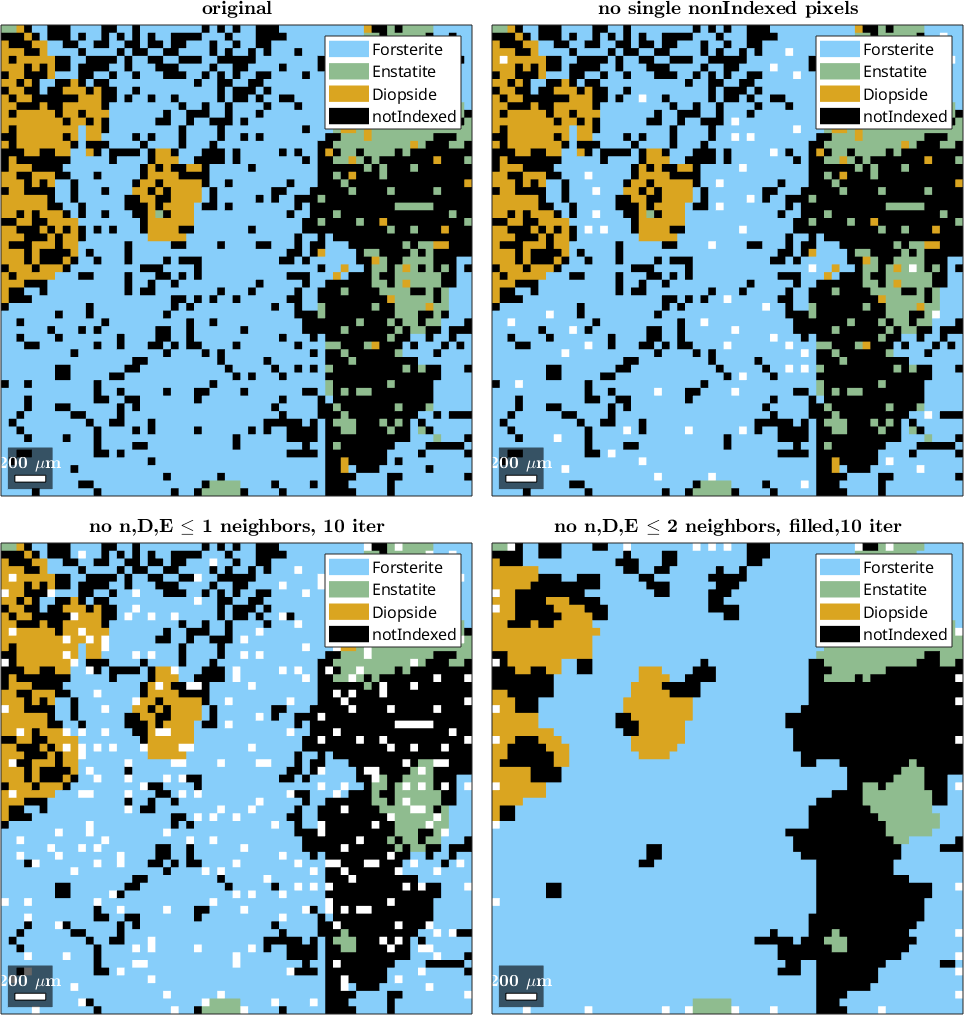do morphological erosion of pixels based on neighbor counts
Syntax
ebsd = erode(ebsd,0)ebsd = erode(ebsd,2,'titanium')ebsd = erode(ebsd,1,{'a' 'b' 'notIndexed'})Input
| ebsd | EBSD |
| counts | upper threshold of same phase pixels around each pixel to permit erosion |
| phase | phase name, cell or string |
Output
| ebsd | EBSD without the eroded pixels |
Example
mtexdata small
plot(ebsd); hold on
plot(ebsd('n'),'FaceColor','k'); hold off;
mtexTitle('original'); nextAxisebsd = EBSD (y↑→x)
Phase Orientations Mineral Color Symmetry Crystal reference frame
0 1197 (32%) notIndexed
1 1952 (52%) Forsterite LightSkyBlue mmm
2 290 (7.8%) Enstatite DarkSeaGreen mmm
3 282 (7.6%) Diopside Goldenrod 12/m1 X||a*, Y||b*, Z||c
Properties: bands, bc, bs, error, mad
Scan unit : um
X x Y x Z : [33000, 36000] x [4500, 7500] x [0, 0]
Normal vector: (0,0,1)
erode isolated, nonIndexed points
ebsd = erode(ebsd,0);
plot(ebsd); hold on
plot(ebsd('n'),'FaceColor','k'); hold off;
mtexTitle('no single nonIndexed pixels'); nextAxis
erode isolated, nonIndexed points
for i=1:10
ebsd = erode(ebsd,1,{'n' 'D' 'E'});
endplot(ebsd); hold on
plot(ebsd('n'),'FaceColor','k'); hold off;
mtexTitle('no n,D,E \(\le\) 1 neighbors, 10 iter'); nextAxis
erode isolated, nonIndexed points
for i=1:10
ebsd = erode(ebsd,2,{'n' 'D' 'E','F'});
ebsd = ebsd.fill;
endplot(ebsd); hold on
plot(ebsd('n'),'FaceColor','k'); hold off;
mtexTitle('no n,D,E \(\le\) 2 neighbors, filled,10 iter');